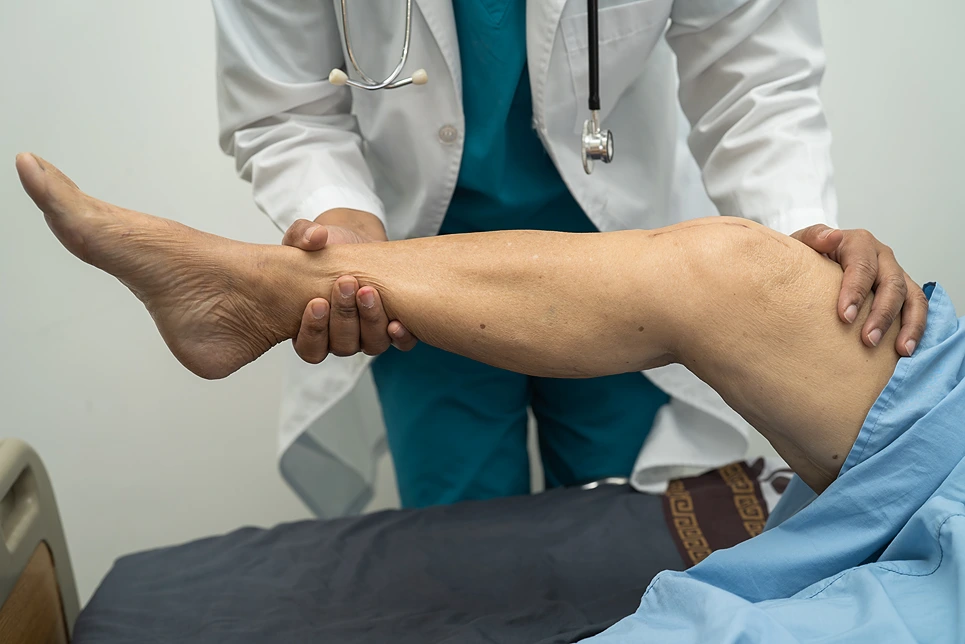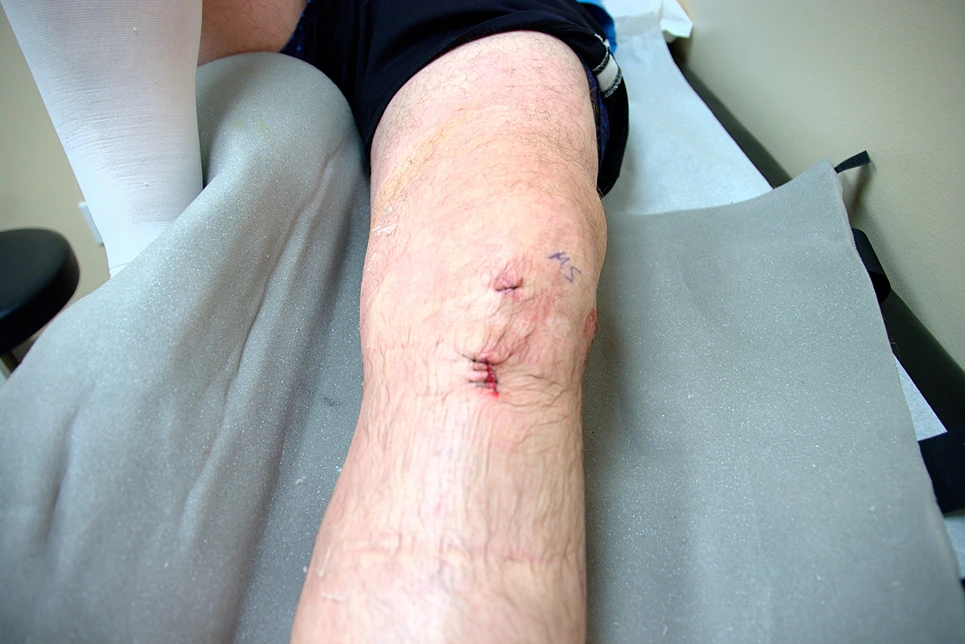

Unsure if Mohs surgery is right for you? At Dermatology & Skin Health, we specialize in Mohs surgery for recurrent, aggressive, or complex skin cancers on the lower legs.
Read on as we explain what Mohs surgery is, the main indications like recurrent growths and preserving function, the meticulous surgical process, recovery period, expected pain levels, risks vs benefits, costs, and tips for selecting the right Mohs surgeon.

The main indications for Mohs surgery on the lower leg are removing recurrent skin cancers, treating aggressive tumors, preserving tissue in functionally critical areas, eliminating rare cancers, and reducing surgical infection risks based on our experience.
One of the top indications is removing recurrent basal cell or squamous cell carcinomas on the lower legs that have returned after previous treatments like cryotherapy or surgical excision.
Mohs surgery has the highest cure rates for eliminating these stubborn, treatment-resistant tumors on the shins, calves, ankles, feet, and other areas of the lower legs.
Mohs surgery is also ideal for getting rid of more aggressive or rapidly growing skin cancers on the lower legs. The precise layer-by-layer removal can effectively eliminate basal cell and squamous cell carcinomas that may have indistinct edges or be spreading under the skin surface on lower leg areas.
We often recommend Mohs surgery for lower leg skin cancers located in functionally important areas where maximizing tissue preservation is vital.
These include the ankles, feet, shins, calves, and other pretibial surfaces of the lower leg where saving as much normal tissue as possible is needed for maintaining mobility and stability.
While less common, certain rarer skin malignancies found on the lower legs may also warrant Mohs surgery. For instance, Merkel cell carcinoma and other unusual cancers can be effectively treated and eliminated through the accuracy of the Mohs technique.
Finally, Mohs surgery minimizes the risk of surgical site infections that can occur after procedures on the lower extremities like the legs. By targeting only diseased tissue, Mohs optimizes recovery and lowers infection risk.
A large prospective study of over 4,400 patients found a basal cell carcinoma recurrence rate of only 1.3% per year after Mohs surgery.
Don't wait - contact DSH today to explore your Mohs surgery options for lower leg skin cancer.
Mohs surgery on the lower shin involves numbing the area, removing the tumor plus a thin layer of tissue, mapping and analyzing it microscopically, taking additional thin layers if needed until clear margins are achieved, and then closing the wound.
At Dermatology & Skin Health, our Mohs surgeons take a precise, staged approach to removing skin cancers on the lower shin while preserving healthy tissue.
Patients are given detailed wound care instructions and follow-up appointments to monitor lower leg healing. We emphasize vigilance for risks like infections.
The typical recovery time for Mohs surgery on the lower leg is 4-6 weeks, but it may take up to 8 weeks depending on the repair method, with smaller incisions healing faster while larger wounds closed by second intention or skin grafts taking longer.
At Dermatology & Skin Health, we have found patients typically experience mild to moderate surgical pain that resolves within a few days after lower leg Mohs surgery.
Based on our clinical experience, pain levels peak in the first 1-2 days and then gradually improve over 3-4 days as the surgical site heals. Pain is often managed effectively with oral medication.
Factors that influence pain include the wound size, location on the leg, type of repair, and individual differences in pain perception. Larger excisions, flap repairs, and surgical sites on more sensitive lower leg areas tend to cause more discomfort.
We work closely with patients to optimize multimodal pain control after lower leg Mohs surgery. This includes prescription medications, ice, compression, elevation, and over-the-counter pain relievers as needed. Staying ahead of the pain works well in most cases.
Severe or worsening pain after the first few days may indicate potential complications, so patients should alert our office for evaluation.

The benefits of Mohs on the lower leg are a high cure rate, maximized tissue preservation, and thorough cell analysis while risks include a slightly higher infection rate of 7% and potential for impaired healing. Though performed properly, Mohs has very low risks and the highest skin cancer cure rates on the lower legs.
Overall, Mohs surgery minimizes risks and provides the highest cure rates for skin cancers on the lower legs when performed meticulously by an experienced specialist.
We recommend patients consider the following factors when selecting a Mohs surgeon for skin cancer treatment on the lower legs:
Learn how DSH's specialized surgeons use Mohs for better lower leg skin cancer outcomes - contact us now!

Burning after Mohs surgery on the lower leg is common due to potential nerve damage, though see your doctor if the burning is severe or accompanied by symptoms like excessive bleeding.
Leg edema after Mohs surgery can be caused by poor circulation, arterial plaque buildup, diabetes, or other conditions slowing the healing process.
Yes, Mohs surgery on the lower leg can sometimes be done without stitches if the wound is small or in an area where scarring is acceptable.
Yes, plastic surgery is often recommended after Mohs surgery on the lower leg to restore appearance and function when there is extensive tissue removal.
Mohs surgery on the calf involves surgically removing layers of tissue containing skin cancer until margins are clear, preserving healthy tissue.
Yes, after Mohs surgery on the leg, you should stay off your feet as much as possible, limit physical activity, and keep the leg elevated to prevent swelling and promote healing.
Wounds on the lower leg may heal slowly after Mohs surgery due to poor circulation, chronic medical conditions, infection, or other factors impairing the healing process.
If your desired appointment type or preferred provider is unavailable online, kindly call (978) 525-0100 for Peabody, MA and (603) 742-5556 for all New Hampshire locations. Alternatively please feel free to send us your request via the patient portal, or via email at info@dermskinhealth.com
*For medical dermatology appointments in MA please dial (978) 525-0100 or fill out the appointment request form above.